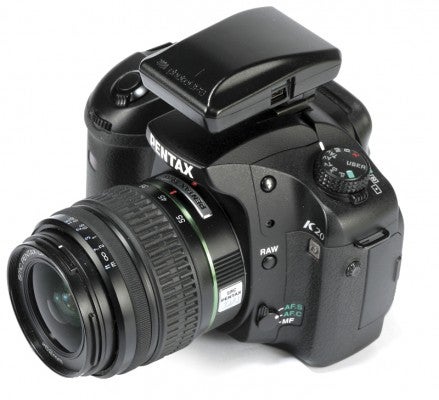Unlike with compacts, GPS functionality hasn't been incorporated into a DSLR as of yet, meaning that photographers need to use an external device such as the Jobo GPS...
GPS Unit
Unlike with compacts, GPS functionality hasn’t been incorporated into a DSLR as of yet, meaning that photographers need to use an external device such as the Jobo GPS if they are to take advantage of the technology. Similar to Nikon’s GP-1 unit (reviewed in the April issue of WDC), Jobo’s device mounts onto the hotshoe of a DSLR or compact, and is said to overcome the ‘usual issues of geotagging’, though without actually specifying what these are.
Unlike Nikon’s unit the Jobo needs its battery charged first via a computer, rather than drawing power from the camera to which it is attached, though once mounted it doesn’t need to be additionally connected via the camera’s USB port. Charging the unit takes the best part of two hours, with two sets of LED lights on its rear indicating the unit’s status, and once ready it simply needs to be mounted on the camera. With no locking mechanism, however, it is liable to be knocked out of place unless the user is careful. For every photo taken a green LED light flashes, indicating the unit has acknowledged capture. Once finished, and when photos have been downloaded to a computer, the unit needs to be plugged in to synchronise with the software.
This process is fairly quick and painless, but as with any GPS unit there is a limit as to its sensitivity when shooting in any enclosed areas. Indoors the unit managed to connect on one occasion and failed on another, though outside I had a higher success rate. One slight problem arose when shooting outdoors, in that it was difficult to see the tiny LED lights momentarily flash. Given that the unit is likely to be used mainly outdoors, it would have perhaps made more sense to have an LCD display instead to indicate whether capture had been successful or not. Such a display may have also indicated signal strength or battery life, which otherwise can’t be ascertained either.
There are a few nice touches with the included software, though. Places of interest close by are displayed next to tagged images, such as churches, restaurants and such. As well as an approximate address, information gathered by the unit includes altitude, longitude and latitude, though no map has been included with the software. For that, you need to import your images to a website such as Flickr, which then places the images on a map.
Verdict
At around £150 the unit is cheaper than Nikon's alternative, and though it may lack some of that model's finesse, it does what it should and it works well. Hopefully the next couple of years will see more development in this field, though if you want to snap a GPS device now then Jobo is definitely worth a look.





